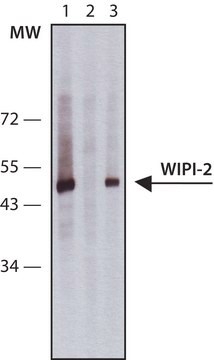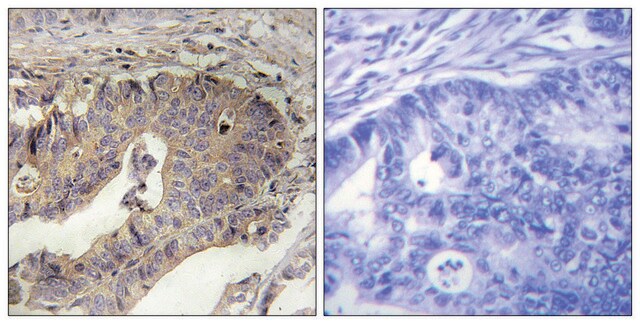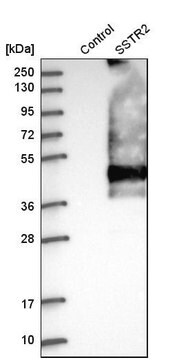SAB4200400
Anti-WIPI-2 (C-terminal) antibody produced in rabbit
~1.0 mg/mL, affinity isolated antibody
Synonim(y):
Anti-ATG18B, Anti-Atg21, Anti-CGI-50, Anti-WD repeat domain, phosphoinositide interacting 2, Anti-WIPI2
About This Item
Polecane produkty
pochodzenie biologiczne
rabbit
białko sprzężone
unconjugated
forma przeciwciała
affinity isolated antibody
rodzaj przeciwciała
primary antibodies
klon
polyclonal
Postać
buffered aqueous solution
masa cząsteczkowa
antigen ~49 kDa
reaktywność gatunkowa
mouse, rat, human
stężenie
~1.0 mg/mL
metody
immunoprecipitation (IP): 2.5-5.0 μg using lysates of rat NRK cells.
western blot: 2-4 μg/mL using whole extracts of human G-361 and NIH-3T3 cells.
numer dostępu UniProt
Warunki transportu
dry ice
temp. przechowywania
−20°C
docelowa modyfikacja potranslacyjna
unmodified
informacje o genach
human ... WIPI2(26100)
mouse ... Wipi2(74781)
rat ... Wipi2(288498)
Opis ogólny
Immunogen
Zastosowanie
- immunoblotting
- immunoprecipitation
- immunostaining.
Działania biochem./fizjol.
Postać fizyczna
Oświadczenie o zrzeczeniu się odpowiedzialności
Not finding the right product?
Try our Narzędzie selektora produktów.
Kod klasy składowania
10 - Combustible liquids
Temperatura zapłonu (°F)
Not applicable
Temperatura zapłonu (°C)
Not applicable
Certyfikaty analizy (CoA)
Poszukaj Certyfikaty analizy (CoA), wpisując numer partii/serii produktów. Numery serii i partii można znaleźć na etykiecie produktu po słowach „seria” lub „partia”.
Masz już ten produkt?
Dokumenty związane z niedawno zakupionymi produktami zostały zamieszczone w Bibliotece dokumentów.
Nasz zespół naukowców ma doświadczenie we wszystkich obszarach badań, w tym w naukach przyrodniczych, materiałoznawstwie, syntezie chemicznej, chromatografii, analityce i wielu innych dziedzinach.
Skontaktuj się z zespołem ds. pomocy technicznej








